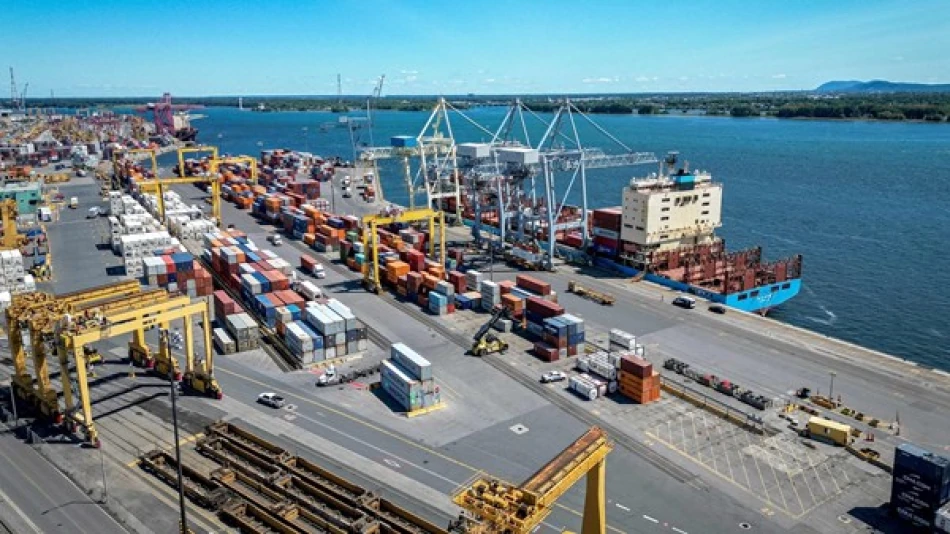
Top US Official Unveils Details on Impactful New Tariff Policies
Trump's New Tariff Regime Signals End of Free Trade Era as Global Partners Face Non-Negotiable Duties
The United States has drawn a hard line on international trade, with Trump administration officials declaring that sweeping new tariffs on dozens of countries are "virtually final" and unlikely to face immediate negotiation. The move marks a decisive shift away from decades of trade liberalization, potentially reshaping global supply chains and forcing businesses worldwide to recalibrate their strategies ahead of the August 7 implementation date.
A Tariff Wall Emerges Across Key Trading Partners
President Donald Trump signed an executive order Thursday establishing tariff rates ranging from 10% to 41% across multiple nations, creating what amounts to a comprehensive trade barrier system. The scope is unprecedented in modern trade policy, touching virtually every major U.S. trading relationship.
European Union products will face a 15% tariff, matching the rate applied to Japanese and South Korean goods. The United Kingdom, despite its "special relationship" rhetoric, receives a 10% levy. Asian manufacturing hubs face steeper penalties: Indonesia at 19%, while Vietnam and Taiwan—critical nodes in global electronics and textile production—will absorb 20% duties.
Strategic Targeting of Supply Chain Vulnerabilities
The tariff structure reveals deliberate targeting of countries that have become integral to American supply chains over the past three decades. Vietnam and Taiwan's higher rates reflect their roles as alternative manufacturing bases that companies adopted during previous U.S.-China trade tensions. By imposing significant costs on these "China Plus One" strategies, the administration appears intent on forcing production back to domestic soil.
Market Implications and Corporate Recalculations
For investors and multinational corporations, the "virtually final" nature of these tariffs eliminates the uncertainty that has characterized previous trade disputes. Unlike the negotiation-heavy approach of earlier trade wars, this blanket implementation forces immediate strategic decisions rather than wait-and-see positioning.
Companies heavily reliant on European components—particularly in automotive and machinery sectors—face immediate margin compression. The 15% EU tariff directly impacts German industrial exports and French luxury goods, sectors that have maintained strong U.S. market positions for decades.
Currency and Commodity Ripple Effects
Currency markets are already pricing in reduced trade flows, with export-dependent economies likely to see weakening currencies as demand for their products becomes artificially constrained. Commodity prices may face downward pressure as global trade volumes contract, though domestic U.S. producers in affected sectors could see price support.
Historical Context: Beyond Nixon Shock Territory
This tariff implementation surpasses even the Nixon administration's 1971 import surcharge in scope and ambition. While Nixon's 10% surcharge was explicitly temporary and designed to force currency realignments, Trump's multi-tiered system appears designed for permanent trade flow redirection.
The approach contrasts sharply with regional trade integration seen elsewhere. While the EU deepens internal market integration and Asian nations expand RCEP cooperation, the U.S. is constructing barriers that could persist well beyond any single administration.
Customs Infrastructure Scrambles for Implementation
The August 7 deadline provides U.S. Customs and Border Protection just weeks to implement collection systems for dozens of new tariff categories. This compressed timeline suggests the administration prioritizes speed over precision, potentially creating administrative bottlenecks that could further disrupt trade flows beyond the intended tariff impact.
Kevin Hassett, Trump's chief economic advisor, confirmed that tariffs are "approximately set" for eight major economies where agreements have been reached, including the EU and Japan. This language suggests some technical adjustments remain possible, but the fundamental structure appears locked in place.
Long-term Realignment of Global Trade Architecture
These tariffs represent more than trade policy—they signal a fundamental realignment of how the world's largest economy engages with global markets. By making these duties non-negotiable in the near term, the administration is betting that other nations will adjust their economic strategies around permanent U.S. trade barriers rather than waiting for policy reversals.
The ultimate test will be whether domestic production can scale sufficiently to replace imports without triggering significant inflation. Early indicators suggest this transition period could prove more disruptive than administration officials publicly acknowledge, particularly in sectors where domestic capacity has atrophied over decades of globalization.
 Layla Al Mansoori
Layla Al Mansoori







